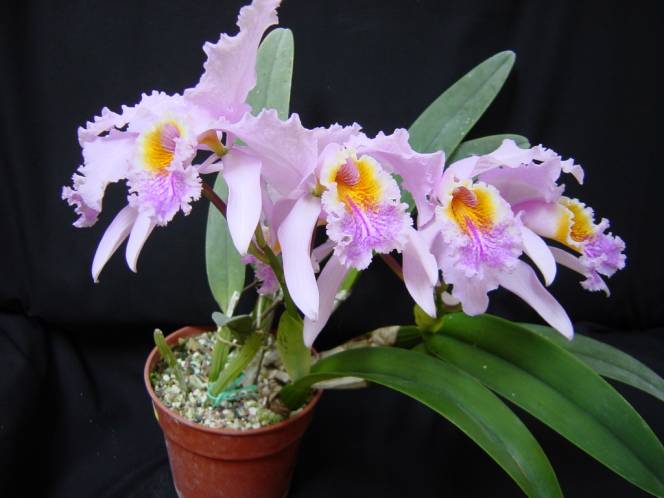Cattleya mossiae – coerulea

This coerulea variety is
but one of very many, of one of the earliest of the species to be
popular with early collectors.
It was first introduced to cultivation by George Green of
Liverpool, who received it from La Guaira – Venezuela – 1836.
It first flowed in the collection of Mrs. Moss, also of
Liverpool, after whom it is named.
The original specimens had three or more flowers per spike,
15-17.5cm. – (6-7” ) across with pink or rose lilac sepals and petals
(lighter or deeper). The
lip has a crisped margin, and is extremely variable in colour but almost
always with central yellow markings extending from the yellow throat. The lip was coloured the same as the sepals and petals with
a central portion of the inside having violet veining.
No two clones are identical, hence the large number of varieties
known. There is an alba version.
The species was established and described by Sir.William Hooker.
Its was found on a mountain
range to the north of Venezuala near the coast, where the plants form a
sheath as they complete their growth cycle during the summer, rest
during their dormancy then form their flower buds and flowers the
following spring – it is important to keep the sheath dry during this
period. New growths
with sheath follow flowering.
Plants need a warm, well lit
spot when in growth; will tolerate a slightly cooler well lit place when
resting. Humidity and air movement need to be constant, ample water when in growth
– reduced when at rest. If
potted the compost needs to be open to afford good drainage and air
passage to prevent stagnation of the medium and the drying of the roots
between wettings. A
little moisture retentive substance is however
beneficial.